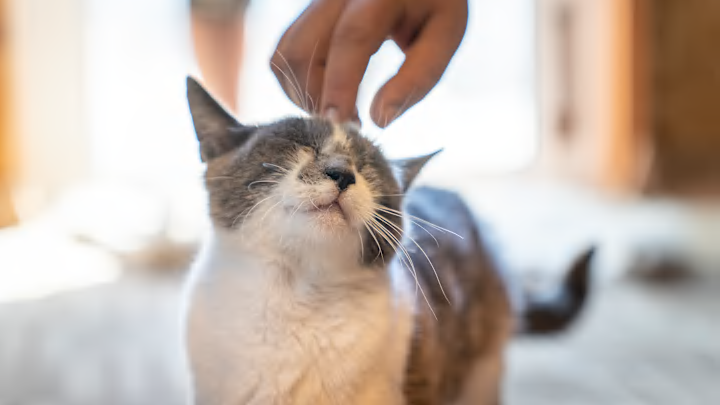The low, pleasant rumble of a cat’s purr is something many pet owners are familiar with. We know cats purr for a variety of reasons (and despite what you may have believed, it isn’t always because they’re happy). But we still don’t know exactly how cats purr.
The Theories Behind How Cats Purr
Biologists used to think that purrs were the sound of blood surging through cats’ inferior vena cava, the large vein that carries blood from the lower half of the body into the heart. But other research has suggested that the sound is actually produced by laryngeal muscles, which are responsible for moving the vocal cords and opening and closing the glottis (space between the cords).
Signaled by a “neural oscillator” in the cat’s brain, the muscles rhythmically contract and rapidly open and close the glottis. As the cat breathes in and out, air hits the vibrating muscles and the glottis, producing bursts of noise 25 times a second, which gives us the familiar purring sound. The signal from the central nervous system that sets the whole thing in motion doesn’t appear to be controlled by the cat, making a purr more of a muscular twitch than a conscious vocalization.
One paper published in the journal Current Biology in 2023 posited that pads of tissue within a cat’s vocal cords help them create the signature low-pitch sound. That research, which used larynxes removed from cats that had been previously euthanized for terminal illnesses, found that muscle contractions were not required to make a purring sound. (Given that the study was not conducted on live cats, more research is still needed.)
Do All Cats Purr?
Not all cats can even make the sound. Scientists used to think that only domestic cats could purr, but gradually found that other members of the Felinae subfamily, like bobcats, cheetahs, lynxes, pumas and others, could also do it. Their cousins in the subfamily Pantherinae, like lions, leopards, jaguars and tigers, meanwhile, don’t seem to be able to purr. The hyoid bone—which sits in the throat and provides support for the tongue and larynx—might make the difference. While purring cats tend to have rigid hyoid bones, the bigger cats have more flexible, less bony hyoids that let them roar but may keep them from purring.
It might be more complicated than that, though. The fat layer on their vocal chords that gives big cats’ roars a little oomph could make it more difficult or impossible for them to purr. Some might have the ability to purr, but simply don’t, or haven’t been heard doing it. Some big cats have even been known make purr-like noises, but only when exhaling, while smaller cats can purr throughout the breathing cycle. These purr-like sounds have yet to be acoustically analyzed to see if they’re true purrs or not.
Read More About Cats:
A version of this story originally ran in 2012; it has been updated for 2025.
